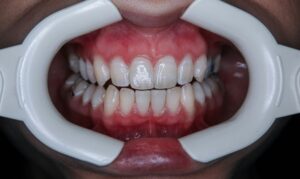When we think of sunburn, we often picture bright, sunny days with clear skies. However, many people are surprised to learn that you can still get sunburned on cloudy days. In fact, the idea that clouds block UV radiation and reduce the risk of sunburn is a common misconception that can leave people unprotected and vulnerable to sun damage. Ultraviolet (UV) radiation, the primary cause of sunburn, can penetrate clouds and reach the skin, leading to unexpected and sometimes severe sunburns.
This article explores the phenomenon of sunburn on cloudy days, examining how UV radiation operates in various weather conditions, the factors that influence UV exposure, and the steps you can take to protect your skin, even when the sky is overcast. By understanding how clouds interact with UV rays and the hidden risks of sun exposure in cloudy weather, you can make informed choices to keep your skin safe all year round.
How UV Radiation Works: Sunlight Beyond Visible Light
The Three Types of UV Radiation: UVA, UVB, and UVC
Sunlight consists of different types of electromagnetic radiation, including visible light, infrared radiation, and ultraviolet (UV) radiation. UV radiation is divided into three types:
- UVA rays: UVA rays have the longest wavelength and penetrate the skin more deeply. They are associated with premature aging and can contribute to skin cancer.
- UVB rays: UVB rays have a shorter wavelength and are responsible for sunburn and most direct DNA damage in skin cells. They are more intense and can cause immediate skin damage.
- UVC rays: UVC rays have the shortest wavelength and are the most dangerous, but they are almost entirely absorbed by the Earth’s atmosphere and do not reach the surface.
UV radiation is the primary cause of sunburn and skin damage. Unlike visible light, which clouds can block or reduce, UV rays are able to pass through clouds and affect the skin.
Why Clouds Don’t Block UV Radiation
While clouds may provide shade and reduce the brightness of visible sunlight, they are not effective at blocking UV radiation. Up to 80% of UV rays can penetrate thin or scattered clouds, reaching the Earth’s surface and exposing the skin to potential damage. Even thick clouds can allow some UV radiation to filter through, creating a hidden risk on overcast days. This phenomenon, often referred to as the “cloud effect,” can lead to unexpected sunburns, as people may not realize they are still exposed to harmful UV rays.
On certain days, clouds can even enhance UV radiation by reflecting and scattering sunlight, increasing exposure levels. This effect can cause a deceptive increase in UV intensity and create a heightened risk of sunburn, even when the sun isn’t visible. These UV levels vary based on cloud type, thickness, and atmospheric conditions, which together create a complex environment that makes sun exposure unpredictable.
The Science Behind Sunburn on Cloudy Days
The Cloud Effect: Enhanced UV Exposure
The “cloud effect” refers to the phenomenon where certain types of clouds can actually amplify UV radiation levels at ground level. When sunlight passes through scattered or broken clouds, the clouds can reflect and scatter the UV rays, creating multiple pathways for the rays to reach the Earth’s surface. As a result, this effect can lead to higher UV radiation in certain spots than on clear, sunny days.
The cloud effect is most likely to occur when the clouds are scattered, thin, or patchy. With this type of cloud coverage, sunlight can pass through gaps in the clouds and reflect off the edges, magnifying UV intensity in certain areas. This effect is particularly strong in high-altitude areas, as there is less atmospheric filtering of UV rays, and in reflective environments, like snow-covered landscapes or bodies of water.
UV Index and Cloud Coverage
The UV index is a measure of the strength of UV radiation at any given time and location. The index considers factors such as latitude, altitude, season, and time of day, as well as cloud cover. Although cloud cover can lower the UV index, it does not eliminate UV exposure entirely. For example:
- Clear skies typically indicate high UV levels.
- Scattered or broken clouds may create intermittent high UV levels due to the cloud effect.
- Thick, dark clouds can reduce UV levels, but they may still allow some UV radiation to reach the surface.
UV levels can fluctuate on cloudy days, making it difficult to predict sun exposure based solely on visual observations. Monitoring the UV index, which is often provided by weather forecasts, can give a more accurate assessment of UV risk, regardless of cloud cover.
Why You Can Still Get Sunburned on Cloudy Days
The Skin’s Response to UV Radiation
Sunburn occurs when UVB radiation damages the DNA in skin cells, leading to an inflammatory response. This DNA damage prompts the body to release cytokines, which activate immune cells and trigger inflammation to protect the damaged area. The increased blood flow to the affected area causes the skin to appear red and feel warm, while the release of chemical mediators sensitizes the skin, leading to pain and discomfort.
While the temperature outside and visible sunlight may change with cloud cover, the UV radiation reaching the skin remains effective at causing DNA damage and triggering this inflammatory response. Therefore, even if the day feels cooler or less sunny, UV rays can still penetrate the skin and initiate the same biological process that leads to sunburn.
Temperature and Sunburn: A Common Misconception
A common misconception is that cooler temperatures or overcast weather prevent sunburn. However, the sensation of warmth has no bearing on UV radiation levels. UV rays, unlike infrared radiation (which generates heat), do not produce a sensation of warmth on the skin. This means that you can still get sunburned on cool, cloudy days without feeling any heat.
This misconception often leads people to skip sunscreen or other protective measures when the weather is cloudy or cool, increasing the risk of sunburn and long-term skin damage. Understanding that UV exposure is independent of temperature is key to ensuring proper sun protection, no matter the weather.
How Long UV Exposure Accumulates on Cloudy Days
While direct sun exposure causes sunburn more quickly, UV exposure can accumulate over time, even on cloudy days. Spending long periods outdoors without sun protection allows UV rays to penetrate the skin gradually, causing cumulative damage that may not be immediately noticeable. For instance, spending several hours outdoors on an overcast day can lead to a significant amount of UV exposure, resulting in sunburn by the end of the day.
This delayed onset of sunburn on cloudy days can be deceiving, as people may not realize they have been exposed to UV radiation until redness and pain set in hours later. This effect highlights the importance of continuous sun protection, especially during extended outdoor activities like hiking, biking, or sports, where the gradual accumulation of UV exposure can go unnoticed.
Skin Protection on Cloudy Days: Essential Tips
Use Broad-Spectrum Sunscreen Year-Round
Sunscreen is one of the most effective ways to protect the skin from UV radiation, whether the sky is sunny or cloudy. Here are some tips for using sunscreen effectively:
- Choose a broad-spectrum sunscreen with an SPF of at least 30. Broad-spectrum sunscreens protect against both UVA and UVB rays.
- Apply sunscreen generously to all exposed areas, including the face, neck, hands, and any other skin not covered by clothing.
- Reapply sunscreen every two hours, especially if you’re engaging in outdoor activities, even if it’s cloudy. Reapply more frequently if you’re swimming or sweating.
- Don’t forget to use a lip balm with SPF to protect the lips, which are sensitive to UV exposure.
Applying sunscreen before heading outside and reapplying it throughout the day can provide a protective barrier against UV radiation on cloudy days.
Protective Clothing and Accessories
In addition to sunscreen, wearing protective clothing can offer an extra layer of defense against UV rays:
- UPF clothing: Choose clothing with a Ultraviolet Protection Factor (UPF) rating, which is specifically designed to block UV rays. UPF-rated clothing offers consistent protection without needing reapplication.
- Hats and sunglasses: Wide-brimmed hats shield the face, neck, and ears, while UV-protective sunglasses protect the eyes and the sensitive skin around them. Sunglasses with UV protection are essential for preventing sun-related eye damage.
- Lightweight layers: Wearing long sleeves and pants in breathable fabrics can reduce skin exposure without causing overheating, even on warmer days.
By combining sunscreen with protective clothing, you can create a comprehensive barrier against UV exposure, even when clouds make it seem less necessary.
Seek Shade and Monitor the UV Index
Seeking shade and checking the UV index are practical ways to stay safe from UV radiation on cloudy days:
- Seek shade: While clouds provide some shade, they are not a substitute for physical barriers like trees, umbrellas, or canopies. Seeking shade when UV levels are high can provide extra protection, particularly during midday when UV intensity peaks.
- Check the UV index: Many weather forecasts include the UV index, which measures the level of UV radiation. Even on cloudy days, the UV index can be moderate to high, indicating a need for sun protection. The UV index provides a more accurate picture of UV exposure than cloud cover alone.
By paying attention to the UV index and seeking shade when needed, you can reduce your risk of sunburn, even when clouds are present.
The Consequences of Sunburn on Cloudy Days
Short-Term Discomfort and Pain
Sunburn on cloudy days can lead to the same short-term symptoms as sunburn on sunny days, including redness, swelling, and pain. Severe sunburns may cause blisters, peeling, and sensitivity, and can take several days or even weeks to heal fully. This discomfort is a reminder of the cellular damage caused by UV exposure, underscoring the need for sun protection regardless of weather.
Long-Term Skin Damage and Aging
Repeated sunburns, whether in clear or cloudy weather, contribute to photoaging, or premature aging of the skin. UV radiation damages collagen and elastin, the structural proteins that keep the skin firm and elastic. Over time, photoaging can lead to wrinkles, fine lines, age spots, and a loss of skin elasticity. This damage is cumulative, so protecting your skin on cloudy days is essential for preventing signs of premature aging.
Increased Risk of Skin Cancer
The most serious consequence of sunburn is an increased risk of skin cancer. Each instance of sunburn damages DNA in skin cells, leading to mutations that can accumulate and eventually cause skin cancer. Types of skin cancer associated with sun exposure include melanoma, basal cell carcinoma, and squamous cell carcinoma. Protecting your skin from UV radiation, even on cloudy days, is a crucial step in reducing the risk of skin cancer and safeguarding your long-term health.
Conclusion: Sun Safety Is Essential, Rain or Shine
Cloudy days may create a false sense of security, but the risk of sunburn remains real due to the ability of UV rays to penetrate clouds. Understanding the ways in which UV radiation interacts with the atmosphere and the skin allows us to take proactive steps to protect ourselves, no matter the weather. By consistently applying sunscreen, wearing protective clothing, and monitoring the UV index, we can reduce our risk of sunburn, prevent premature aging, and minimize the risk of skin cancer.
Sun protection is not just for summer or sunny days—it is a year-round commitment to maintaining healthy skin and preventing long-term damage. The next time you head outside on a cloudy day, remember that UV rays are still present and capable of causing harm. Embracing sun safety as a daily habit, regardless of cloud cover, ensures that you’re giving your skin the care and protection it needs to stay healthy and resilient for years to come.




